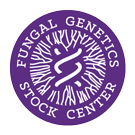Strain: Neurospora crassa
FGSC #1700
Reporting Genes: ota
Species: crassa
Allele: UM728
Alternate Strain Number: otab3R2A(UM7
Mutagen: UV
Depositor: RHD
Linkage Group: IIIR
Mating Type: A
Genetic Background: SL3
Opposite Mating Type: 1701
ref1: https://doi.org/10.1128/jb.96.2.383-388.1968
Genes
